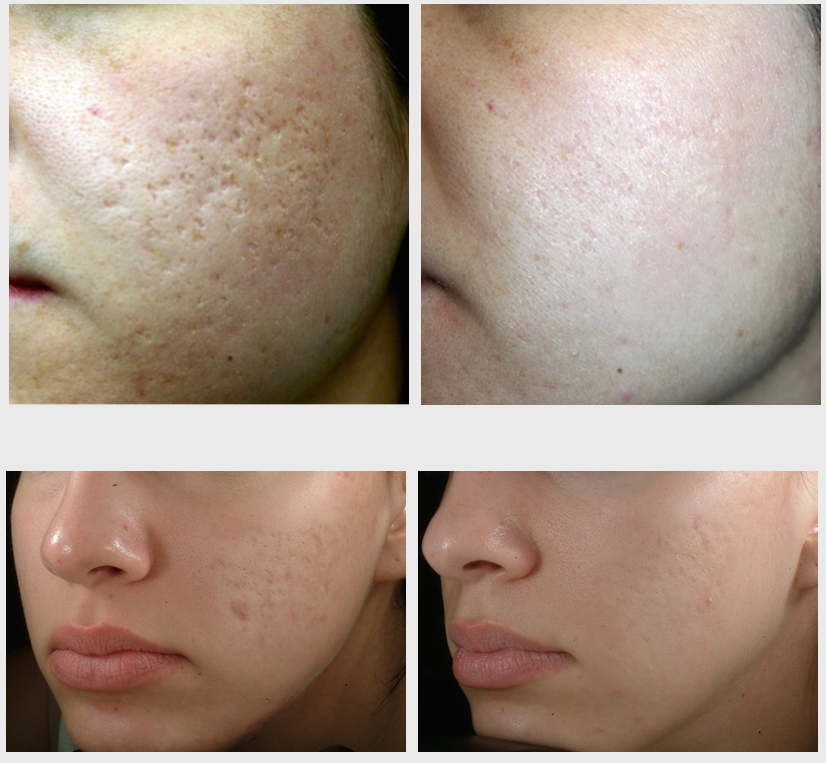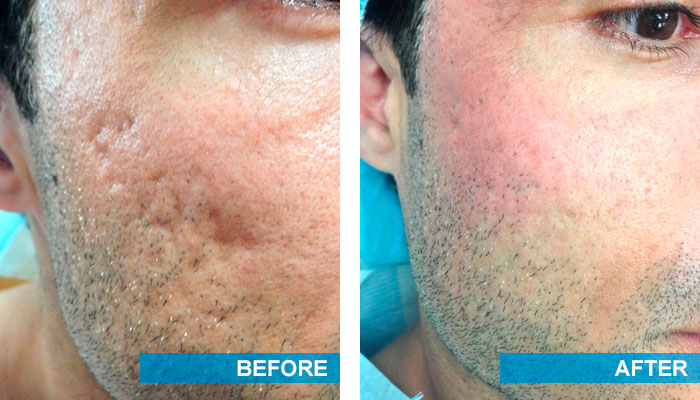A Comprehensive Overview to Handling Skin Conditions: Concentrating On the Therapy of Acne Marks
Acne marks stand for a considerable concern for lots of people, often impacting self-esteem and total skin health. Understanding the different kinds of acne scars, such as atrophic and hypertrophic, is essential for efficient monitoring and treatment.
Comprehending Acne Marks
Recognizing acne marks includes acknowledging the complicated interplay in between skin healing and the inflammatory processes that occur during acne break outs. Acne develops when hair follicles become clogged with oil, dead skin cells, and germs, leading to inflammation. acne scars. This inflammatory feedback is essential for dealing with infection but can also result in damages to the skin's tissue
When the body tries to recover itself, it produces collagen, a protein important for skin framework. The amount and top quality of this collagen can differ, leading to different types of marks. Factors affecting mark development consist of the severity of the acne, specific skin kind, genes, and the body's recovery feedback.
Additionally, very early intervention in acne therapy can play an essential role in preventing scarring. Prompt management of breakouts minimizes swelling and tissue damage, which are essential consider mark development. Education and learning on proper skin care and treatment choices is crucial for people susceptible to scarring. Inevitably, understanding the hidden devices of acne and its recovery process is essential for efficient management and prevention of acne marks.
Kinds Of Acne Scars
The complexity of acne scars can be classified right into a number of distinct types, each reflecting the underlying skin damage and recovery action. One of the most typical types consist of atrophic marks, hypertrophic marks, and keloids.
These scars can additionally be classified right into icepick, boxcar, and rolling marks, each varying in form and depth. acne treatment for sensitive skin. Icepick marks are slim and deep, resembling little punctures, while boxcar marks have a bigger, more angular look.
Hypertrophic scars, on the other hand, are increased and arise from an overflow of collagen during recovery. These marks might vary in dimension and can in some cases discolor over time but may stay noticeable.
Keloids are a more serious type of hypertrophic scarring, expanding beyond the original injury site and commonly needing much more hostile treatment choices. Understanding these types is vital for determining the most effective treatment method customized to an individual's specific scar type and skin disease.
Topical Therapies
Topical therapies play an important function in handling acne scars, offering clients a variety of alternatives targeted at boosting skin appearance and look. These treatments largely concentrate on advertising skin regrowth, lowering coloring, and boosting general skin tone.
Among the most commonly used topical agents is retinoids, which are by-products of vitamin A. Retinoids stimulate collagen manufacturing and increase cell turn over, helping to lessen the appearance of scars over time. Additionally, alpha hydroxy acids (AHAs) and beta hydroxy acids (BHAs) can exfoliate the skin, removing dead skin cells and advertising a smoother surface area.
Another effective group consists of topical anti-oxidants, such as vitamin C, which can help to lighten hyperpigmentation connected with acne scars while providing anti-inflammatory benefits. In addition, silicone gels and sheets have been revealed to hydrate and flatten scars, making them much less visible.

Specialist Therapy Alternatives
When it involves dealing with a lot more extreme acne scars, patients often turn to expert therapy alternatives that can supply a lot more dramatic outcomes than topical treatments alone. These treatments are typically provided by dermatologists or certified experts and consist of numerous approaches customized to private skin kinds and scar severity.
One of the most usual therapies is chemical peels, which make use of acids to exfoliate the skin and promote regeneration. This technique can considerably reduce the appearance of superficial marks. Microneedling, an additional effective option, involves developing micro-injuries in the skin to promote collagen manufacturing, boosting texture and lessening marks.
Laser therapy is additionally extensively utilized, with fractional lasers especially targeting scarred areas while preserving surrounding skin. This approach can produce exceptional renovations in skin look over several sessions - acne and acne scars treatment. Additionally, facial fillers are made use of to restore volume and ravel uneven skin surface areas, giving immediate, albeit temporary, results
Way Of Living and Natural Remedy
Including lifestyle adjustments and home treatments can play a significant duty in taking care of acne scars, enhancing expert therapies. Preserving a well balanced diet rich in vitamins, anti-oxidants, and minerals can promote skin recovery. Foods high in vitamin C, such as citrus fruits, and those consisting of zinc, like seeds and nuts, promote skin regrowth and help in reducing swelling.
Hydration is also vital; drinking sufficient water keeps the skin hydrated, assisting in its natural fixing procedures. Normal workout improves blood flow, which can enhance nutrient delivery to the skin and enhance overall complexion.
Along with dietary modifications, incorporating topical natural remedy can be beneficial. Natural components such as aloe tea, vera, and honey tree oil possess anti-bacterial and anti-inflammatory properties, which may assist in lowering the appearance of scars. Scrubing the skin with gentle scrubs can likewise promote cell turnover, aiding in the fading of marks in time.
Moreover, acne treatment for sensitive skin establishing a constant skin care routine that consists of sun protection is important, as UV exposure can dim marks. By integrating these lifestyle adjustments and natural remedy, people can boost their skin's healing procedure and accomplish a more even complexion.
Conclusion

Understanding acne marks includes recognizing the complicated interaction in between skin healing and the inflammatory procedures that take place during acne break outs. Aspects influencing scar development consist of the extent of the acne, private skin type, genes, and the body's recovery feedback.
These marks can further be categorized into icepick, boxcar, and rolling scars, each differing in form and deepness. Icepick scars are slim and deep, appearing like little punctures, while boxcar marks have a broader, more angular look.Reliable management of acne marks requires an extensive understanding of their kinds and the underlying mechanisms entailed in scar formation.